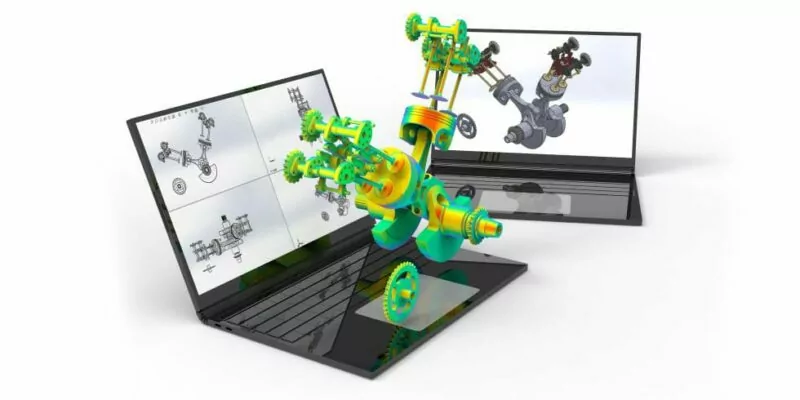Computer-aided design (CAD) software has become an essential part of daily engineering. It helps engineers preview projects before implementation, improves productivity, and makes 2D and 3D models more complete. There are many CAD tools on the market, but AutoCAD and SolidWorks are two of the most well-known. But which one do you need?
We compare two popular CAD tools, AutoCAD and SolidWorks, to help you choose the best tool for your engineering needs. We examine their respective features, pros and cons, and which tool is best suited for each type of project.
Learn to Use AutoCAD and SolidWorks
AutoCAD
AutoCAD is a powerful and flexible CAD program developed by Autodesk. It has been an industry standard for over 30 years and is primarily used for 2D and 3D drafting. AutoCAD is widely used in many fields, from design to mechanical engineering, and is known for its accuracy, reliability, and adaptability.
3D SolidWorks
Another is SolidWorks, a powerful 3D CAD software developed by Dassault Systèmes. It is known for its user-friendly 3D modeling, testing, and product creation. It is primarily used by mechanical engineers and those working on new product development. SolidWorks offers a wealth of tools, such as solid modeling, testing, and assembly control.
Differences between AutoCAD and SolidWorks
Both are essential tools for CAD creation, but they have different applications. Let’s compare the advantages and disadvantages of each.
1. Why and How to Use
AutoCAD: AutoCAD has a wide range of applications, but its most important feature is its versatility. It is used in many different fields, such as design, architecture, civil engineering, electrical engineering, and automotive engineering.
SolidWorks: SolidWorks is a 3D CAD tool primarily used for solid modeling. Many people use it to create parts and structures for goods, machines, and complex mechanical systems. SolidWorks is ideal for engineers who need to plan and test motion systems and parts.
2. Ease of Use
AutoCAD: Learning AutoCAD takes a long time, especially for beginners. But once you get the hang of it, it has many features that can be customized to help engineers create accurate 2D and 3D models.
SolidWorks: SolidWorks has a simple layout and is easier to use for beginners. It is designed to help engineers quickly and easily assemble models and structures.
3. Modeling Capabilities
AutoCAD: AutoCAD is a powerful program for 2D drafting and 3D modeling, but SolidWorks is better at 3D modeling. It can handle basic 3D work, but not as well as SolidWorks, which has more advanced tools and features for creating complex 3D models.
What is SolidWorks? SolidWorks is excellent for creating 3D models. It is designed for creating 3D models, structures, and simulators. It features parametric design tools that allow engineers to define relationships between parts and keep these relationships up-to-date as changes are made.
4. Performing Simulations and Analysis
AutoCAD: The simulation and research tools in AutoCAD are limited. It can create simple 3D models, but it lacks the advanced modeling or mechanical property analysis tools needed to perform these tasks.
SolidWorks: SolidWorks excels in this area. Its simulation tools allow engineers to test designs to see how they would perform in practice. These tests include motion studies, stress tests, and fluid dynamics models. This helps ensure that design ideas are feasible before implementation.
5. Collaboration and File Sharing
AutoCAD: AutoCAD works well with other Autodesk tools and can open a wide variety of file types. The cloud-based tools make it easy for team members to collaborate, and the DWG file format is widely used in the business world.
SolidWorks: SolidWorks also offers cloud-based collaboration tools, but its file types aren’t compatible with as many programs as AutoCAD. However, SolidWorks is excellent for team collaboration on complex parts and structures.
How much does AutoCAD cost?: AutoCAD has a monthly fee, which can be expensive for small businesses or freelance engineers. However, the subscription entitles you to all AutoCAD features, such as modifications and tools that run in the cloud.
SolidWorks: SolidWorks subscriptions are priced similarly to AutoCAD and can be expensive, especially if you need a full suite of modeling and advanced tools. However, the software’s unique features make it a good choice for engineers working on complex mechanical designs.
